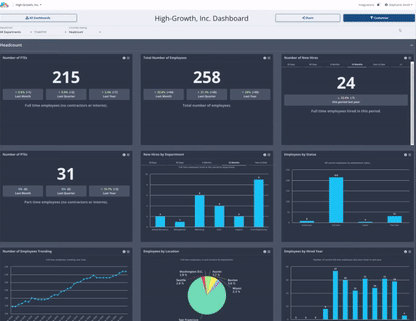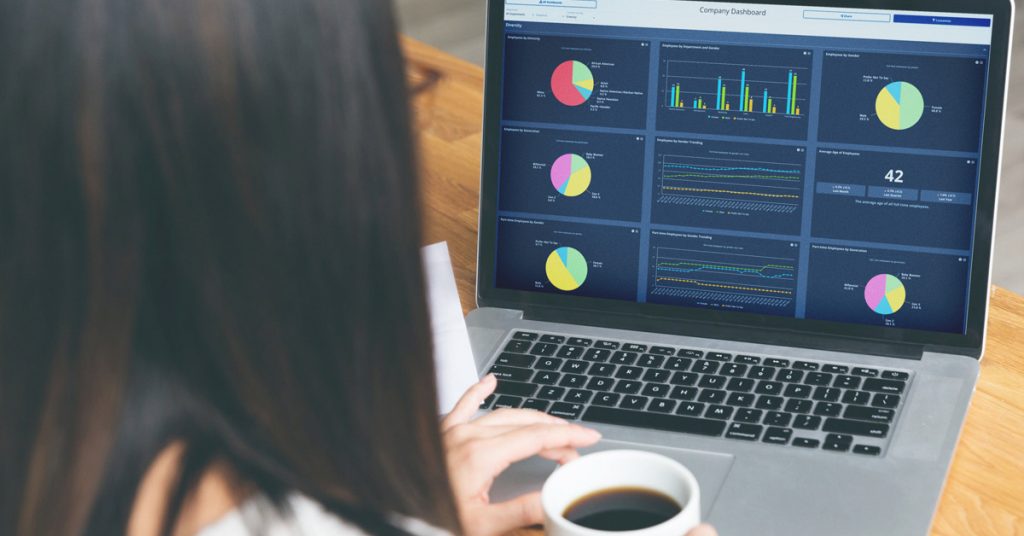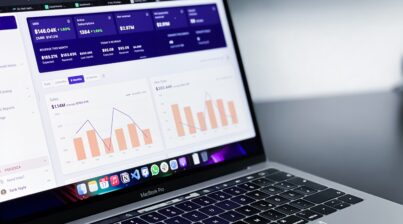According to Oracle’s State of HR Analytics 2021 report, over half (55%) of HR professionals are still using spreadsheets in organizations. Since its beginning in 1985, the Microsoft Excel spreadsheet has almost been synonymous with HR departments. HR managers often still use MS Excel for basic HR functions such as payroll, attendance, and annual leave, especially those in small businesses or startups that don’t need the complexity of larger corporations.
So, why do businesses use it? MS Excel is easily available and inexpensive and, although it does require someone who understands how to use the program and knows how to input formulas and format the database accordingly, it’s served its function for the most part – for the last 35 years. But is there an easier way? Can HR departments become streamlined?
MS Excel may be able to keep track of employee information, salary information, vacation days, absences, start dates, and so forth but is it the best tool for the job? After all, most HR professionals feel that spreadsheets are the bane of their existence as data entry can eat up hours of an employee’s week.
And, what if your company scales up? Your small team of twenty people managed by one HR manager may grow to hundreds with a team of dozens of HR professionals and spreadsheets aren’t managed in real-time. Who has the most up-to-date version? How do you keep track? Do you upload it to a company shared drive? Is that even secure? The problem is that if you’re still using spreadsheets for HR data, you’re decades behind and newer, better techniques have taken its place.
Why do HR departments use MS Excel spreadsheets?
One reason is that many HR departments think they don’t have the time or budget to research and procure expensive HR software packages and manage them. With so much HR software on the market, where do you start? There are software packages that track headcount, employee recognition programs, turnover, retention, diversity, recruitment, engagement, employer brand, and so much more.
Would keeping track of these software programs become as cumbersome as data entry in MS Excel? With an HR data dashboard, it most likely wouldn’t be. An HR data dashboard pulls all of your HR data from multiple platforms into one, easy-to-view location – like Employee Cycle’s HR data dashboard.

And, as companies scale, many find that having various spreadsheets with hundreds, if not thousands, of employees along with systems that don’t easily connect with each other can cause access and information overload. Spreadsheets that once worked to manage less than a hundred employees may seem overwhelming when approaching hundreds or thousands. So, how do you keep track of the data, update it, and interpret it while understanding how to leverage what you already have?
Many senior leaders require HR reports to make actionable changes too, but can spreadsheets make meaningful reports to present to your SLT? Can it track your retention data and provide feedback? Can it notify you about your DEI metrics and where you need to improve? Can it measure performance management? Spreadsheets certainly have the functionality when created and managed by capable hands but the time it takes to wrangle the data, manage those functions and make them usable is not scalable and often unmanageable.
The bottom line is that spreadsheets are not only making companies unscalable and out of date but they also put companies at greater risks for data breaches.
How spreadsheets impact HR departments
We have written often in these last few weeks about diversity, equity, and inclusion (DEI) initiatives and how important they are. HR analyst Josh Bersin notes that 80% of companies don’t have proper DEI initiatives. What does DEI have to do with MS Excel spreadsheets? Well, more than you might think.
Many organizations don’t know if they’re meeting diversity targets or how they stack up because they keep their data in spreadsheets where they have no way to interpret them in meaningful ways. Bersin explains, if they don’t have a “comprehensive view and understanding of employee characteristics…data can become ‘hidden’ and negatively impact how leadership cultivates genuine DEI initiatives.” In this case, Bersin gives companies the benefit of the doubt when their DEI initiatives aren’t in place: their HR departments have inefficient spreadsheet practices and can’t interpret the data they have – so how can they go that extra mile with DEI initiatives if they can’t even track retention data per department?

Another HR profession notes, “Until employee data is at the forefront of company-wide decision making, leadership will continue to make decisions that don’t align with employees or, at the end of the day, their mission.”
So, data breaches aside, lack of real-time information, spreadsheet and data entry overload for employees, etc aside too: if you don’t have good HR data, you cannot make leadership decisions for your organization that matter.
How do MS Excel formulas help my data?
There’s no denying that at the beginning MS Excel was a whizz at what it does and it still serves many functions for companies, but HR data shouldn’t be one of them.
Although there are formulas for the length of service, salary calculations, filtering by name, job type, and so on, these formulas aren’t easy to remember – there wouldn’t be thousands of “How-tos” on the internet if so.
MS Excel has filtering data functions, TODAY, DATEDIF, COUNTIF, and SUMIF functions, all helpful. It has data validation, VLOOKUP, pivottables, and more but it requires someone who knows what they are doing.
If you have an MS Excel whizz in your company, that’s amazing but it doesn’t alleviate the multitude of other concerns with file management, data management, and security concerns that come with spreadsheets. Spreadsheets are outmoded and behind the times. Why not bring your data into the 21st century with an HR data dashboard!
What are the advantages of HR data dashboards and cloud software over MS Excel spreadsheets?
Employee Cycle takes all of your HR software and puts it into one, unified data dashboard. Every bit of HR data you have can become unified and live in one, customized visual dashboard. If you want to put your DEI metrics, your retention and onboarding rates, length of service, and pay scales in one dashboard, you can.
Employee Cycle walks you through how to use the dashboard by providing data coaching – helping you set up everything you need to be successful. They work with you to talk through KPIs and your company goals and they show you the beauty of HR data.
Not convinced that you really need to automate your HR analytics and reporting process? Watch the painful process of HR reporting below.
Schedule your free HR dashboard software demo today to learn how to best leverage your HR data.












